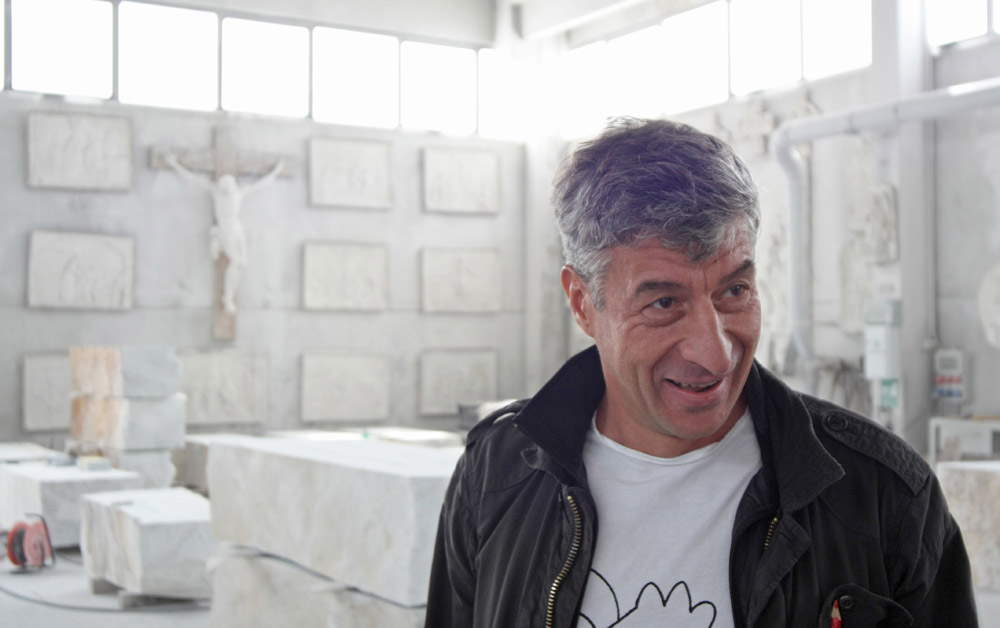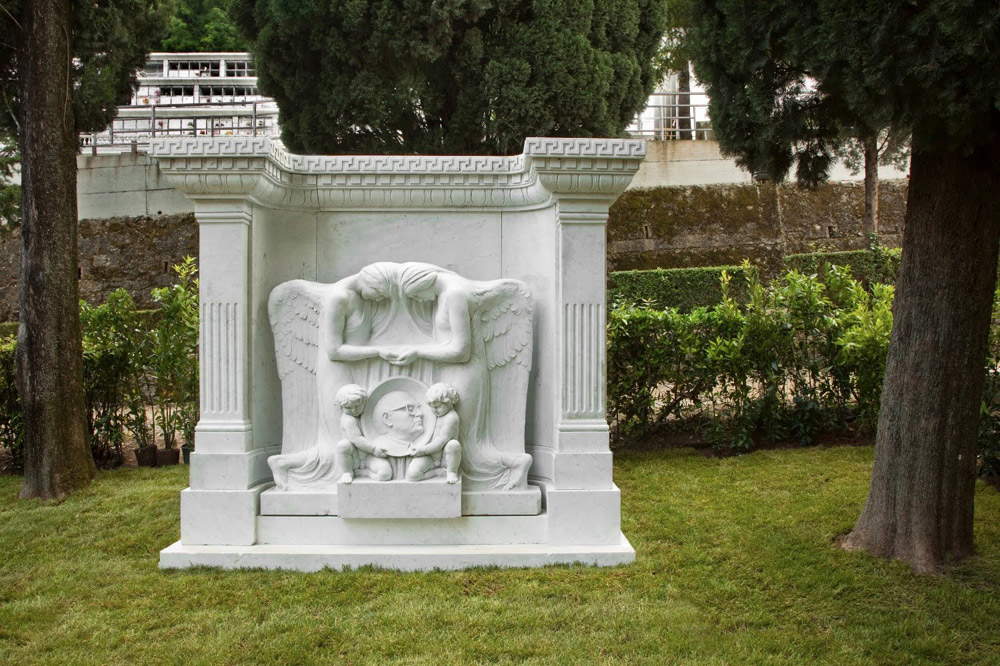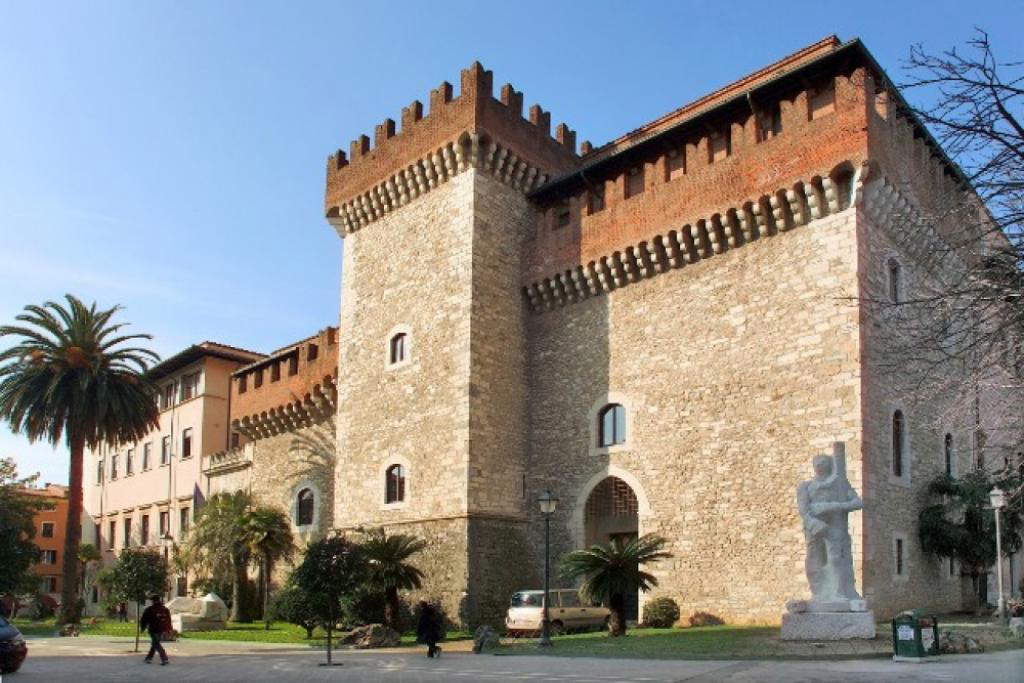Maurizio Cattelan: I always have something to learn
Next Monday, April 23, 2018, Maurizio Cattelan (Padua, 1960), will be in Carrara for the inauguration of the academic year of the Academy of Fine Arts: during the ceremony, he will receive the title of honorary professor and unveil Eternity, the project he created together with the students of the Academy, who were asked to express themselves on themes related to funeral rituality and death. From the works submitted, Cattelan selected twenty, which were awarded as many scholarships, worth 1,500 euros each (for a total donation of 30,000 euros guaranteed by the artist), and which will make up a large performance-installation that will be unveiled on Monday itself, in the gardens of the Academy. In anticipation of the event, we caught up with Maurizio Cattelan, who gave us an exclusive interview about the project and more. The interview was conducted by Finestre sull’Arte managing editor Federico Giannini.
 |
| Maurizio Cattelan |
FG. Maurizio Cattelan, You come to Carrara with the project Eternity, which deals with the theme of funeral rituals and death. The last time you were in Carrara, on the occasion of the 2010 Biennial, you had proposed precisely a work of funerary art: Untitled, the monument to Bettino Craxi, which had sparked so much discussion in the city. Why did you choose funerary art for the project intended for students? Does Carrara always inspire you -- funereal topics?
MC. Of course Carrara as a city is not, but the marble on which part of its economy is based is. It is an authoritative, authoritative material, to which we have deputed, in Western culture, the commemoration of the dead for centuries. Artists often have a relationship of closeness and fascination with death. I think it’s one of the drives to make art, the crossing of that mortal limit. It’s a classic theme in art, and that’s why I think it’s interesting for young artists to engage with it.
Speaking of funeral rites, 2010 was also the year when the funeral of the Carrara Art Biennial was celebrated: the one you attended in 2010 was the last edition. In your opinion, how serious was it for the art world to lose an event with a decades-long history, founded in 1957, and in which great art personalities participated?
Always better to go out with a bang than to grow old in an armchair! Joking aside, I don’t know the reasons for the closure, and certainly it would have been important to maintain some continuity... at the same time it is true that certain institutions need to renew themselves and find new forms of existence. Like the phoenix, the Biennale could be reborn from its ashes more alive and interesting than before.
 |
| Maurizio Cattelan, Untitled (2010; marble, 155 x 140 x 40 cm). Work presented at the 14th Carrara Biennale. Photo Zotti, courtesy Cattelan Archive. |
How much does the audience influence the success or failure of an event? And how much does the audience really weigh in the logics of contemporary art, for example in determining the success of an artist? There is a feeling that there is a kind of disconnect between critics, artists and the public....
I have always worked mostly for myself and for two or three other people who are in my head, the most demanding. I said to myself, if I satisfy them, the audience, the critics and everyone else will also be satisfied without having to think about it. Certainly the audience can decree the success of the work, but I find the limits of the work, which are never decreed by the audience, much more interesting. I have always been the strictest judge of my own work, and this is the only pressure that has ever interested me.
Getting back to the main topic: what is the need that prompted an internationally renowned artist like you to go back to a small town like Carrara and do something for this town?
To combat a paradox: when you are young, you are full of ideas but you don’t have the money to realize them. As an old man, the opposite happens more often: the means are not lacking, but the fertility of when you were in your twenties is gone. But, in one respect, every age gets what it deserves-I’m not a big fan of regrets.
Your action is aimed at students at the Academy of Fine Arts. You yourself attended the Academy of Fine Arts in Bologna. How important do you think the weight of the Academy of Fine Arts is in the training of an artist? Is it decisive for him to attend an Academy? And does attending an Academy exert an influence on an artist’s commercial growth?
I actually never attended the Academy; it was enough for me to hang out with the people who attended it. Fortunately, it is not always true that you have to attend the most expensive schools to get satisfaction from what you do: comparison and listening skills are worth more than any school.
 |
| The Academy of Fine Arts in Carrara |
And still on the subject of the relationship between artists and the market: in your view, how much does the market determine an artist’s production of content? How should a young person who has just entered the art world stand in front of the market?
It is always true for me that everyone chooses their own path by interweaving three factors: skill, motivation and attitude. Skill is what you are capable of doing. Motivation determines what you do, aptitude how well you do it. My good fortune is that I had the strength to weave them together so well that I was able to emancipate myself from my past, I hope it will be the same for the young students at the Academy.
Speaking of content, there are critics who say that contemporary art, in today’s society, has become irrelevant. Is art therefore no longer capable of producing strong content?
The most interesting works I have seen in recent times are those in which you see an unfinished struggle, in which you can sense a deep mystery, a secret. I don’t think that’s changed, it’s just a question of how much is produced and how much work is noteworthy-I think the proportion between those two is always about the same. There is no denying that, in a sense, the contemporary art world reflects overwhelming economic trends that imply a certain degree of superficiality. In recent years, the art market has spread like wildfire, and new ways of collecting have sprung up all over the world. This growing demand leads to ever faster turnover, similar to what happens in fashion with the seasons. Art is a status symbol, but that does not mean it has lost its aura: the ideas that spring forth are for everyone and free, and that is what really matters.
To return to the Eternity project: yours is an operation of pure patronage, all the more rare if we think that it comes from an artist, because there are very few artists who decide to put in place operations such as yours, providing as much as thirty thousand euros to be allocated to the projects of twenty young students of the Academy of Fine Arts. What are the reasons for this decision?
I think it is important to support young artists, and I am very curious to see the results of their work-I believe that everyone has something to teach, and I always have something to learn.
Patronage in Italy is much less practiced than elsewhere. We think about state support for patronage. In Italy, the Art Bonus, since its introduction, so for about four years now, has brought about two hundred million euros into the state coffers. In France, in 2016 alone, the “mécénat culturel” brought in half a billion euros. In 2010, the Louvre managed to acquire a work by Cranach the Elder by covering a quarter of the cost through crowdfunding. In Italy, such operations are only in their infancy. What have we done wrong so far? What state do you think patronage is in in our country? Is Italy a country in which a patron, in your view, can be comfortable?
I think it’s important for young people to have the freedom to reinvent life with formats and content that we haven’t used yet. They should set us on fire, destroy us and rebuild us. If I think about my own experience, the best thing to do in the beginning is to stay away from institutions: often conveying research and experimentation is not their first interest, but it can be that of patrons: some people fall in love with artists and support them throughout their careers, depending on their own possibilities. And they must be stimulated to act with determination, to the limit of reasonableness.
Regarding your operation, some fundamental points must be fixed: the fact that the work of twenty young people is spurred, the fact that the Academy of Fine Arts of Carrara benefits from the collaboration of an international artist, the fact that the city of Carrara itself gains visibility from this operation. One might think, however, that such an operation might be part of your marketing strategies. If so, how would you respond to such an observation?
Even bad publicity is still publicity!
Warning: the translation into English of the original Italian article was created using automatic tools. We undertake to review all articles, but we do not guarantee the total absence of inaccuracies in the translation due to the program. You can find the original by clicking on the ITA button. If you find any mistake,please contact us.





























